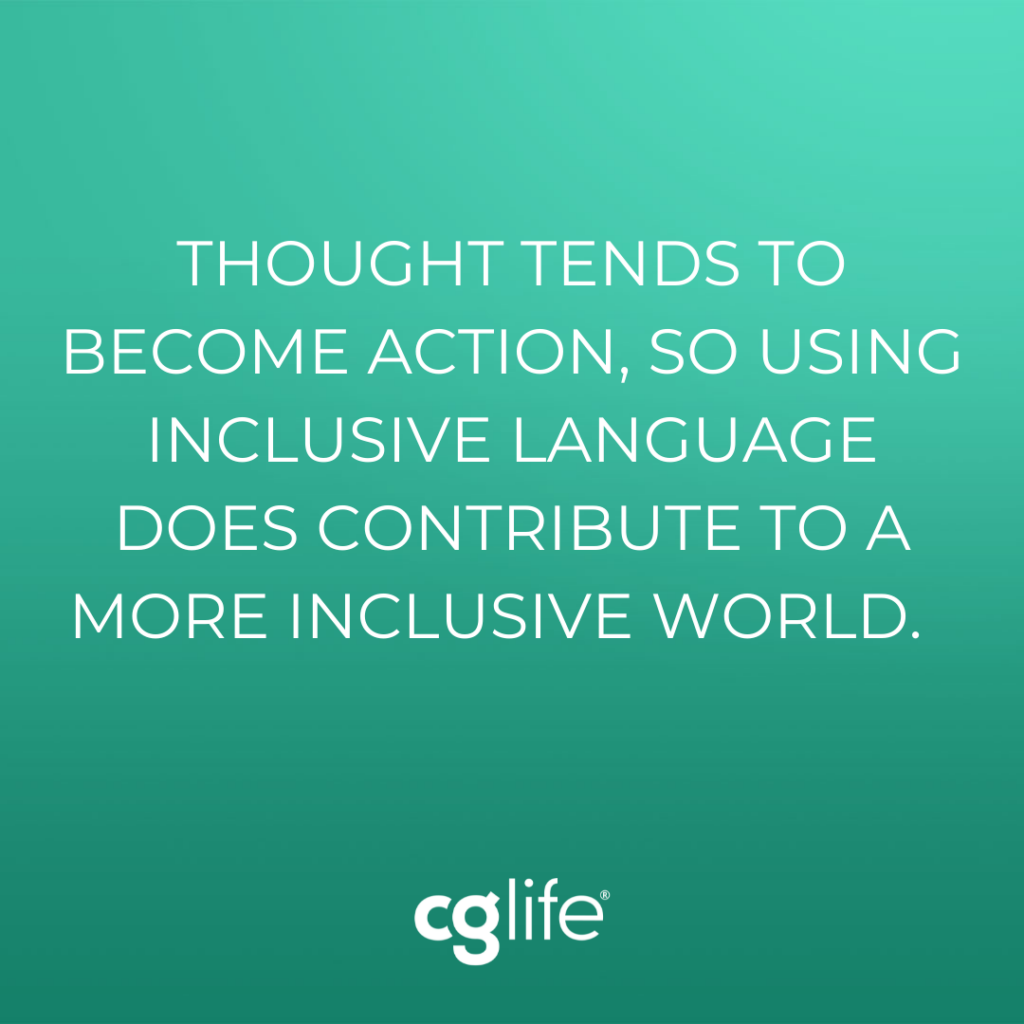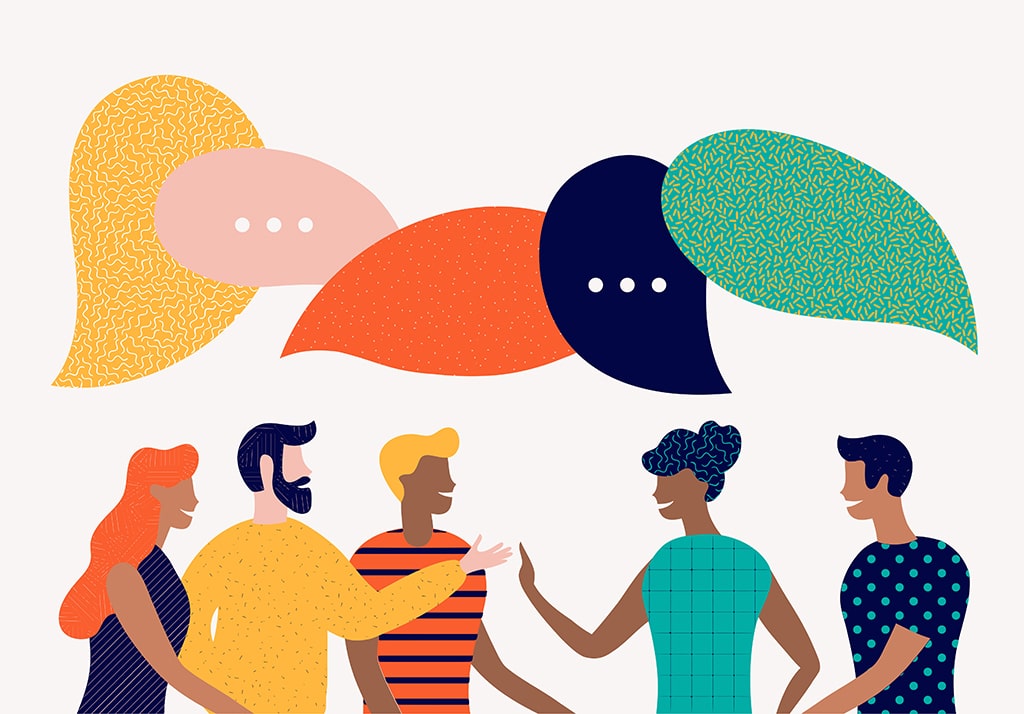In most blog posts, I’d spend the first few paragraphs building a case for why the topic is important and why you should listen to me about it. But really, it’s 2022, and brands today should be celebrating diversity—and showing support through their messaging, starting with inclusive language. Case closed.

It’s no secret that the language we use shapes our world. For example, some languages, like Russian, treat dark and light blue as separate entities. Brain scans have shown that Russian speakers distinguish between these hues much faster than their English-speaking counterparts, highlighting the real neural pathways at play during language use.
If language can change how we perceive things as seemingly concrete as color, think about how it could affect implicit biases we may already have. Thought tends to become action, so using inclusive language does contribute to a more inclusive world.
The Linguistic Society of America defines inclusive language as that which “acknowledges diversity, conveys respect to all people, is sensitive to differences, and promotes equal opportunities.”
Here are quick tips for incorporating inclusive language in your brand’s messaging:
Be respectful
This is, without a doubt, the top rule. Accept that you don’t always know, and may never fully understand, the experiences of others. But you can always try to learn. Even if you identify with one traditionally underrepresented group, that doesn’t mean you automatically understand how another feels. Accept this and approach every individual with respect. A little humility goes a long way.
Be inclusive of culture, race, ethnicity, and nationality.
- Monitor your use of regional phrases or words that may need to be clarified for your audience.
- Respect how individuals identify with certain groups and refer to said groups using the most current terminology.
Expand traditional definitions of gender and sexual orientation.
- Refer to people by their preferred pronouns. Style guides officially recognize “they” as a singular pronoun. When in doubt, ask!
- Use gender-neutral phrases, including job titles, as often as possible. E.g., “salesperson” instead of “salesman.”
- Incorporate qualifiers, such as “cisgender,” when necessary.
Accommodate a range of abilities.
- Use person-first language to emphasize the individual first and the disability second.
- Avoid using mental health conditions to describe personality traits. E.g., using “OCD” to describe someone who’s organized.
- Incorporate a user-friendly design that accommodates a range of abilities.
Write so anyone can understand.
- Don’t assume your audience will speak native English in a globally connected world. Use plain language and avoid idioms and jargon when possible (yes, this can sometimes be difficult to do in the life sciences).
- Consider your audience’s education and reading level. A general rule is to write for an eighth-grade level of English proficiency.
- Be clear and concise (this is good writing practice anyway!). Avoid unnecessarily long words or sentence structures that may confuse readers.
Consider small nuances.
Language is full of tiny nuances that influence meaning. One example from the AMA’s 2021 language guidebook is the change from referring to patients as “marginalized” to saying they “have been marginalized.” This shifts the blame from the patient to outside societal forces. Being aware of subtle meanings can help you choose more inclusive language.
Seek representation.
Representation is key, and it comes from the inside out. Include key opinions and writers from historically underrepresented groups, especially when writing about a sensitive subject matter.
Be genuine.
- Do the research to make sure you get your messages right. Inauthentic messages can come off as tone-deaf or hypocritical. Ultimately, you need to ensure your organization stands for the things you claim.
- Ultimately, you need to ensure your organization stands for the things you claim, so if you’re planning on making statements about particular issues, it’s a good idea to have programs that back up those statements.
